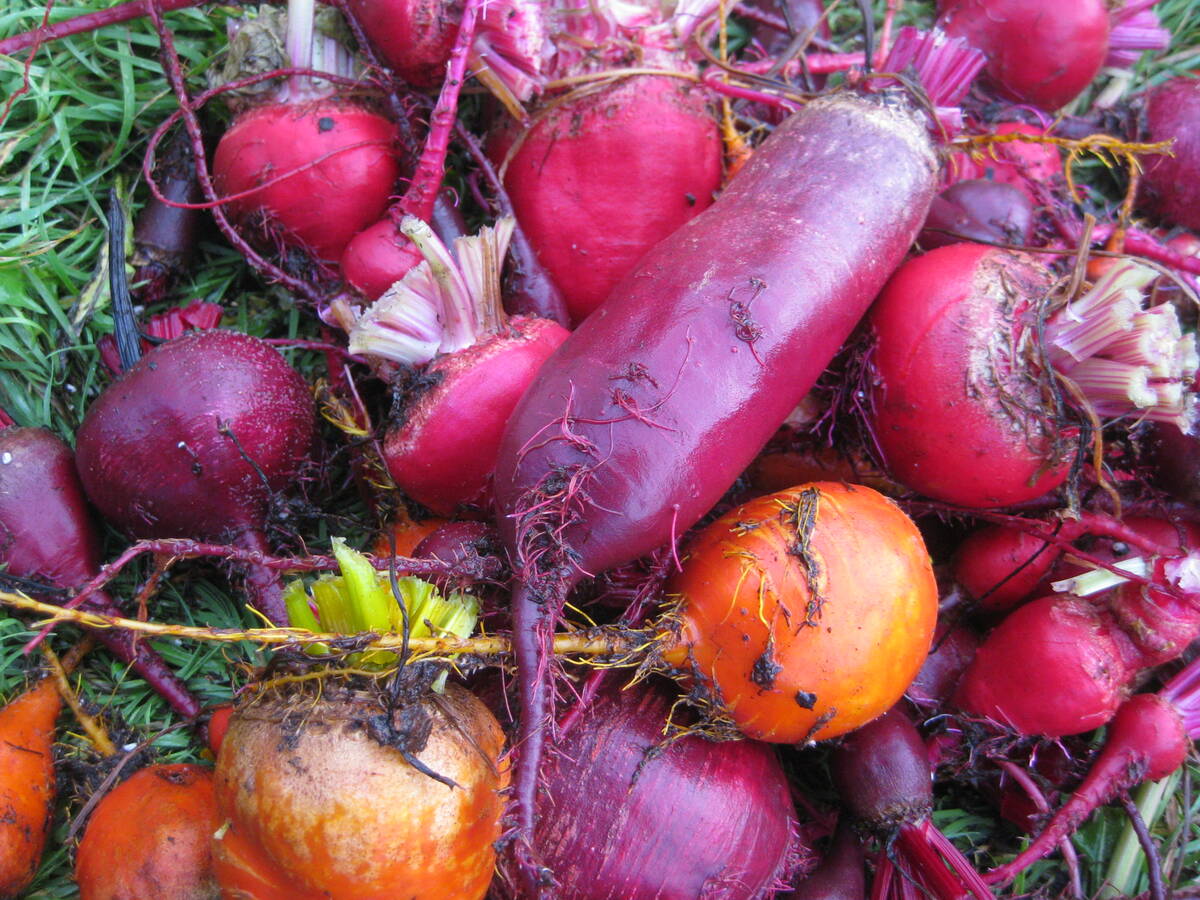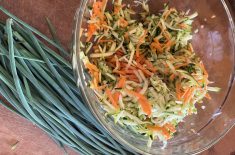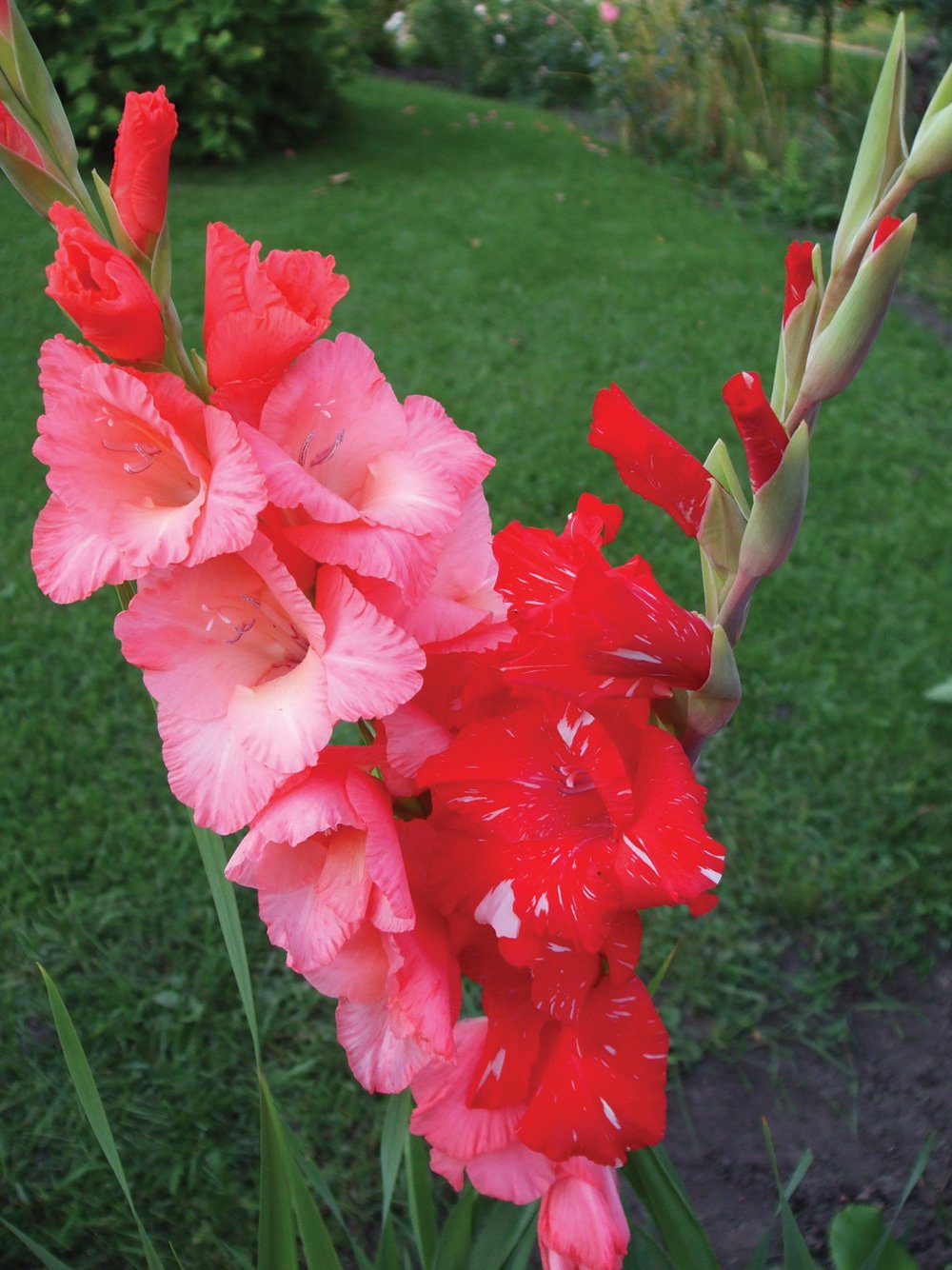As I write this, a massive winter blast is headed toward southern Manitoba. Despite late-season nasty weather I remind myself that, “No winter lasts forever — no spring skips its turn.”
What say you that we plant carrot seeds this issue? It’s OK with me if it’s OK with you. After all, next to tomatoes and potatoes, carrots are right up there near the top of the list of homegrown veggie favourites.
Have a thing or two to say later along about native river birch trees. Obviously, they are not the same as the magnificent European weeping birch whose leaf-laden limbs draped many landscaped yards for years and years. Then along came the deadly bronze birch borer focusing their attention on weeping birch trees and depositing eggs into the bark. The grubs fed on tree cells starting near the top, voraciously eating their way down and eventually killed thousands of weeping birch trees in Winnipeg and endless numbers planted elsewhere.
Read Also

Putting down roots, part 1: Beets
Densely textured, richly coloured and earthy even in their seed form, beets are reminiscent of dirt for Saskatchewan writer dee Hobsbawn-Smith.

Let me touch on tomatoes for a moment. The home garden is our source of health and wellness so I remind readers and myself that tomatoes are medicine. I’ve mentioned the antioxidant lycopene generously found in stewed tomatoes numerous times in the past. There’s lycopene in raw tomatoes but it’s not as readily absorbed by the body. Preparing fruits of the vine by mashing, cooking and stewing them, breaks down tomato cells in such a way that the human body can readily absorb lycopene up to four times more when compared to raw form. Research also indicates that a small amount of vegetable fat such as sunflower, canola or olive oils stirred into tomatoes while they’re cooking greatly improves absorbability. By the way, a few other garden goodies we grow that also contain lycopene are carrots, celery and watermelon. Next time you’re eating out, ask the server for tomato juice and yes, even apple juice instead of O.J. If you haven’t heard of tomato dust before, you will today, so keep reading right through to the last word.
Remember the days of good neighbour gardening clubs, groups and pen pals — many of which developed into lifelong friendships? Some folks even got to meet in person.
Well, thanks again good neighbour for meeting up with me here on this Grainews page where I love to tip my hat to gardeners, farmers and readers all. Thank you, and yes, thank you again for coming by. Don’t know what I’d do without you. I also love to welcome the first chattering pair of jenny wrens claiming their territory and helping keep insect pests under control.
Let’s plant carrot seeds
Buy fresh seeds. Carrots — like parsley seeds — are slow germinating. Sow thinly and plant seeds 1/2 inch deep. Sprinkle water lightly every evening so as not to disturb seeds and keep the seedbed from drying out. Should some thinning be required, do it when seedlings are about three inches high. Carefully loosen up the soil around remaining plants. When five or six inches tall add some mulch, drawing it up over carrot root tops. Carrots have a tendency to stick above the ground, turn green and can lose their sweet taste, but a thick mulch of organic matter around them solves this problem. When maple tree leaves begin to emerge, it’s a good indicator for time to plant carrots. Try seeding in double rows about 10 or 12 inches apart. Sprinkle wood ashes over seeded rows and water in gently. Potassium in wood ashes is highly soluble and easily absorbed by the soil where it is picked up by growing plants. But don’t overstep it with ashes as carrots like a moderately acid soil. Go easy on nitrogen fertilizers and concentrate on potassium. Too much nitrogen especially if relying on well-aged manure can result in pronged, fibrous roots. Potassium on the other hand promotes solid, sweet root growth. Other nutrient products for carrots include kelp, fish residues and organic sea-derived fertilizer. Aforesaid also have been found effective as a pest repellent. A successful carrot patch thrives on steady, abundant moisture. Even-steven watering is the name of the game, but not mucky soil or standing water.
Carrot varieties to consider
Rainbow Blend is a premium mixture of carrot seeds producing an attractive array of colours: purple, white, red, yellow and orange. The roots are packed with nutrients and always make a quick, refreshing snack for eating out of hand. Gardeners will get the most from this collection by sowing seeds as evenly as possible to reduce thinning. Kids love the colours and it’s a good variety to teach them the knack of successfully growing carrots under guidance of a skilled parent/gardener.
Volcano carrot is a hybrid loved by growers due to its resistance to breaking and tolerance of very late harvests. The roots are smooth to 18 to 22 cm (seven to nine inches) long. The tops are upright and strongly attached for easy pulling with strong disease resistance against blight.
Coreo carrot is a Nantes type with upright, compact tops that are easy to pull. Roots are 18 to 20 cm (seven to eight inches) — smooth and crisp — great for bunching with a good tolerance to bolting. This is an ideal variety for early-season planting.
Viper carrot is the thinnest of the thin. Roots have virtually no core with robust flavour. They can reach over 30 cm (12 inches) long — but get this — at the shoulder they are no more than two cm (3/4 of an inch). Such a thin variety under an inch makes this one ideal for dense plantings. Despite that, strong tops make them easy to harvest.
Bolero is the first choice for storage carrots. They are very sweet, crunchy and remain fresh for months (stored in ideal conditions) or when left in the ground in frost-free areas. The 20-cm (eight-inch) blunt roots are slightly tapered. Bolero is highly resistant to blight and powdery mildew.
Seeds of all carrots described are available for purchase at West Coast Seeds, www.westcoastseeds.com at Delta, B.C., V4L 2P1, phone toll free 1-888-804-8820.
River birch A.K.A. black birch (betula nigra)
A mature river birch grows fast, reaching 30 feet in 15 years. Its trunk is clothed in thin shredded bark of salmon, plum, tan or off-white colour. Core of the trunk area becomes a tight roll of paper that wrinkles and cracks in an attractive way. The river birch is rarely if ever bothered or attacked by borers. This attractive tree with remarkably shaggy bark has elegant deep-glossy-green diamond-shaped leaves. Few people seem to notice the subtle catkins in spring as the bark alone provides reason enough to grow it, but like other birches, the species frequently produces multiple trunks. Topmost branches are upright and lower limbs are pendulous or in the outline of lazy S’s. River birch stick to wet sites in the wild or along the banks of rivers. They also perform reasonably well in drier sites including clay soil as long as it’s a sunny location. In alkaline soils with a pH above 7.5 and higher the trees will develop signs of iron deficiency with leaves showing signs of chlorosis or out-of-character colouration.
A tree’s roots are its biggest sugar storehouse. One lump of store-bought white sugar is the same or very similar to that produced by plants through photosynthesis. The following is according to Dr. Glynn Percival of Tree Research Labs in Reading, England. He applied plain old white sugar and water as a root drench following a severe root pruning. The rate of fresh root growth increased on some, but not all tree species. Researchers discovered that small concentrations of sugar water were beneficial to reducing transplant shock experienced by birch trees, but harmful to oaks. A number of factors contribute to transplant shock, but water stress alone is at the top of the list. Further research is needed. You might even consider doing some at-home trial experiments using various strengths of sugar water on plants and other trees.
Make some tomato dust
Many readers may be familiar with the song “Dust on the Bible” and most have heard about panning for gold dust in Yukon streams. But have you ever made tomato dust? Well today’s your day to find out how. The chief ingredient is tomato skins so save yours after peeling tomatoes when making tomato juice, salsa, stewing, or canning. Tomato dust is a mysterious brown powder that seems to give it an almost chocolate quality. Place saved tomato skins on a non-stick baking sheet and pop them in the oven at a low temp of 95 C (200 F) for about two hours or until completely dry. Turn them periodically and begin checking for dryness after an hour and a half. Remove skins from the oven when dry. Once they’re cooled, use a mortar and pestle available at many dollar stores or get a spice grinder to pulverize dried skins into powder. When totally dry, store tomato dust in a clear glass jar. Use tomato dust in oil vinaigrette or sprinkle over vegetables such as cauliflower, broccoli or tomato slices. Some high-end and fancy restaurants feature a garlic-infused olive oil dip with specialty breads that can now be enhanced with a mysterious sprinkling of tomato dust.
















